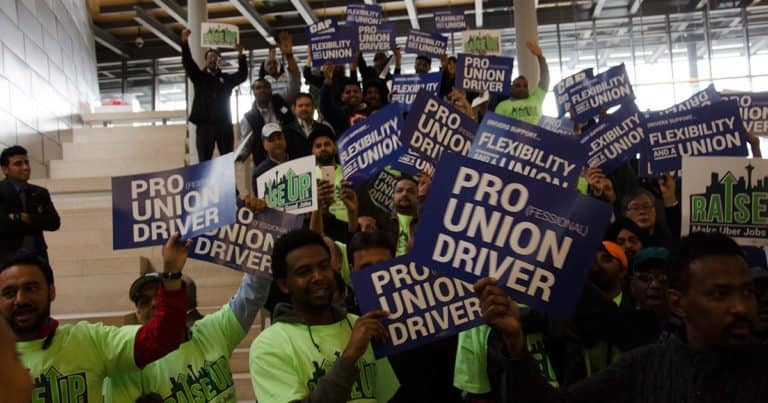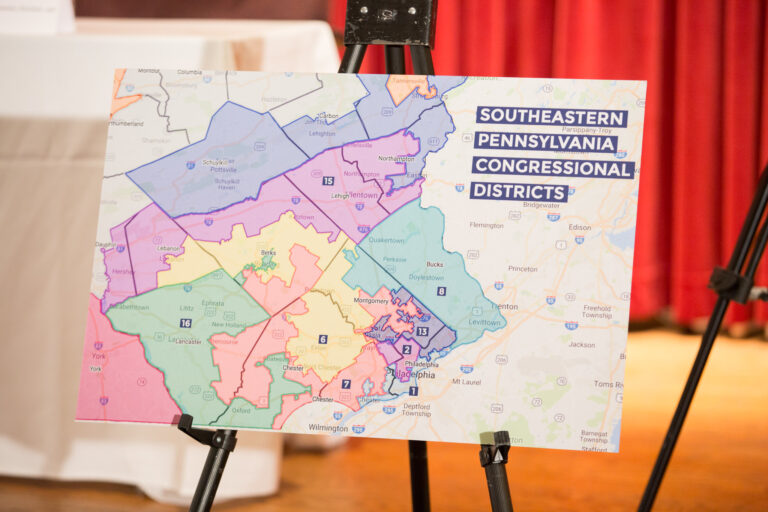
David Madland is a Senior Fellow at the Center for American Progress Action Fund.
Collective bargaining systems that promote sectoral bargaining as well as workplace-level bargaining have much greater union contract coverage compared to purely workplace-level bargaining systems. But some union allies worry that promoting sectoral bargaining could reduce union membership because it can create a free-rider problem, whereby similarly placed workers are covered by a union contract whether they are members or not.
Yet, there is little evidence that sectoral bargaining hinders union membership. Rather, as I highlight in a new Center for American Progress report, sectoral bargaining can — and typically does — support high union membership.
Sectoral bargaining creates processes that encourage union membership — and these pro-union forces are generally more powerful than the free-rider problem it fosters.
- Under sectoral bargaining systems, employers face similar labor costs whether their workers are unionized or not. As a result, employers have less incentive to fight their workers’ efforts to unionize, which can make organizing workers easier. The level playing field also protects unionized workers and high union standards from being undercut by low-paying companies.
- In addition, sectoral bargaining provides new recruitment opportunities for unions with workers that they already have a connection to because they are covered by a union agreement.
- Furthermore, workers still have incentives to unionize to have greater voice and power in negotiations. Though the incentive to organize in order to influence bargaining that occurs at the sectoral level may be more attenuated than in worksite-only systems, worksite bargaining in sectoral systems can address shop-specific concerns. Integrating sectoral and worksite-level bargaining creates strong incentives for workers to stay engaged and participate in the union.
- Finally, sectoral systems typically include additional policies that are critical to supporting high union membership such as strong worker rights, union access to worksites, and the Ghent system, where unions help deliver governmental benefits to their members.
That sectoral bargaining systems can overcome the free-rider problem and support high union membership is born out in real world examples. Indeed, the three main ways to study the impact of sectoral bargaining on union density—before and after analysis of policy change in particular countries, cross-country comparisons, and case studies of organizing campaigns—all point in the same direction.
For example, labor union membership significantly increased when Uruguay revitalized sectoral bargaining. In contrast, after New Zealand, Australia, and Britain severely weakened or eliminated sectoral bargaining they experienced sharp reductions in union membership.
Broader cross-country research tells a similar story that sectoral bargaining supports high union membership. Jelle Visser, a professor at the University of Amsterdam, studied union membership in European countries over several decades and found that greater bargaining centralization (with sectoral bargaining more centralized than worksite bargaining) has a “significant, positive and robust impact” on union membership.
Columbia University’s Bruce Western found that more centralized bargaining was one of three institutional conditions “essential for union growth” in a study of economically advanced countries since 1950. Magnus B. Rasmussen, professor at the University of South Eastern Norway, studied 35 countries over recent decades, as well as a smaller sample of 12 advanced countries from 1911 to 2000, to find that sectoral bargaining is more “conducive” to growth in union membership than worksite-only bargaining.
Studies found that sectoral systems were especially likely to produce higher union membership for workers in jobs that are “inherently hard to organize,” such as those with many small employers or heavily contracted, fissured industries.
Not surprisingly, the seven countries with the highest union membership in the OECD—Iceland, Sweden, Finland, Denmark, Norway, Belgium, and Italy—all have sectoral systems. In contrast, the six countries with the lowest union membership in the OECD – United States, Turkey, Colombia, Hungary, Lithuania, and Estonia — all have primarily workplace bargaining.
To be sure, there are some countries with sectoral bargaining and low union membership – most notably France, with 11 percent membership. But France has an unusual system that hinders membership – and is not a model the United States should emulate to boost union density.
In the French system, unions have little need to recruit members. Unions receive most of their funding from the government and employers rather than member dues. Furthermore, union bargaining power does not depend on membership: Unions gain the ability to bargain based on the support they receive in special workplace elections for employee representatives, which means unions do not need many members to negotiate with employers. In addition, French workers — whether they are members or not– receive virtually all rights and benefits of union contracts. This creates a greater free rider problem than in other sectoral systems, as other types of sectoral systems extend only some elements of union contracts to nonmembers—such as wages, but not all benefits or on-the-job protections.
Case studies of union organizing campaigns also indicate that sectoral bargaining can facilitate worker organizing and membership.
For example, Amazon workers in Italy took several strike actions—including a massive systemwide strike in March 2021—in part to get Amazon to fully comply with national sectoral agreements for similar workers. These strikes were critical in helping achieve a historic contract with Amazon. The contract is helpful for union recruitment because it allows unions to communicate with workers through the company’s systems.
Similarly, workers have organized around sectoral issues in the United States — even in sectoral standard setting systems that fall short of sectoral bargaining and thus should create less of a push for collective action. A review of sectoral minimum wages by the Institute for Research on Labor and Employment at U.C. Berkeley found that unions “continued to grow membership in locations covered by the policies in subsequent years.” They found, for example, that union density for large hotels in Santa Monica, California, went from 0 percent to 70 percent under a sectoral minimum wage. In Nevada, home-care workers unionized several employers as an outgrowth of their efforts around a sectoral standards board.
The cases of Amazon workers in Italy and organizing campaigns in several U.S. cities and states show that the structures of sectoral bargaining systems can motivate workers and help them succeed. In these cases, workers organized around sectoral issues, rather than free riding, and the sectoral systems helped workers achieve their goals and motivated further organizing. In these cases, there was also often an interplay between workplace and sectoral organizing, with efforts at both levels supporting the other.
In short, the research shows that sectoral bargaining generally supports high union membership. Sectoral bargaining can encourage worker engagement and make their efforts more likely to succeed, creating a virtuous circle that boosts union membership.
Policies to promote sectoral bargaining in the United States should be advanced together with other reforms because sectoral bargaining best fosters union membership when it operates in conjunction with workplace bargaining as well as grassroots organizing and other pro-union policies such as strong worker rights, union access to workers, and policies that incentivize membership.










Daily News & Commentary
Start your day with our roundup of the latest labor developments. See all
December 16
Second Circuit affirms dismissal of former collegiate athletes’ antitrust suit; UPS will invest $120 million in truck-unloading robots; Sharon Block argues there are reasons for optimism about labor’s future.
December 15
Advocating a private right of action for the NLRA, 11th Circuit criticizes McDonnell Douglas, Congress considers amending WARN Act.
December 12
OH vetoes bill weakening child labor protections; UT repeals public-sector bargaining ban; SCOTUS takes up case on post-arbitration award jurisdiction
December 11
House forces a vote on the “Protect America’s Workforce Act;” arguments on Trump’s executive order nullifying collective bargaining rights; and Penn State file a petition to form a union.
December 8
Private payrolls fall; NYC Council overrides mayoral veto on pay data; workers sue Starbucks.
December 7
Philadelphia transit workers indicate that a strike is imminent; a federal judge temporarily blocks State Department layoffs; and Virginia lawmakers consider legislation to repeal the state’s “right to work” law.